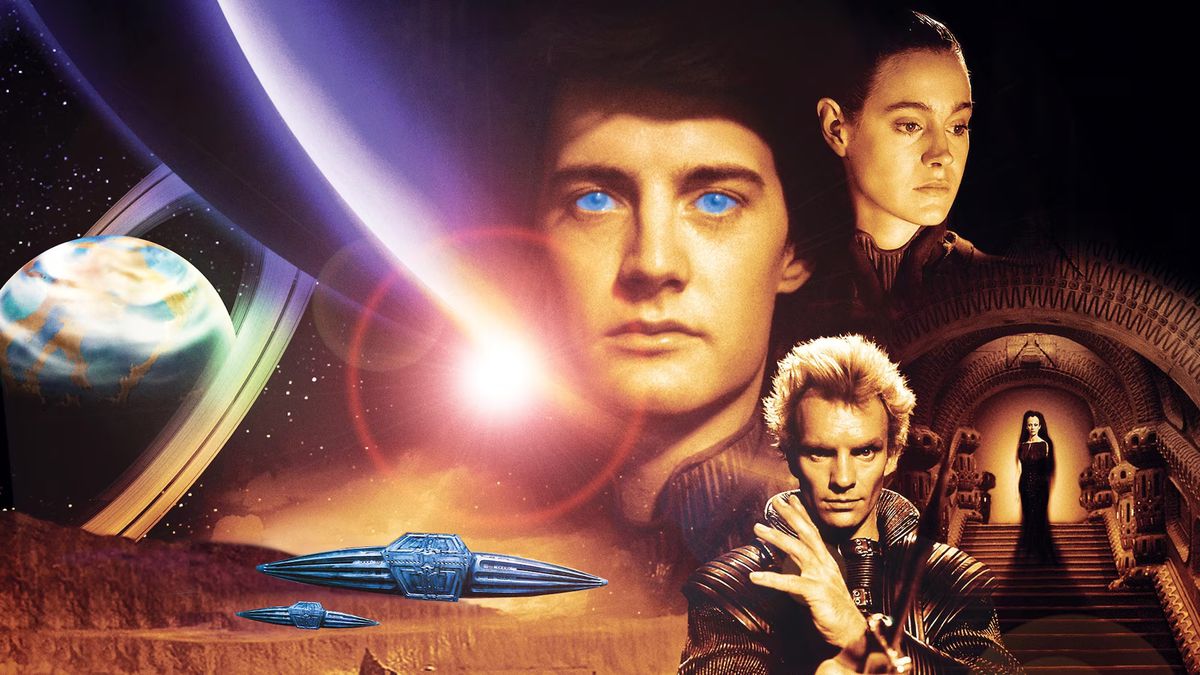Sting is my favorite part of David Lynch’s Dune
Poor Sting. In 1983, The Police frontman was at the height of his popularity. The trio’s fifth album, Synchronicitytopped the Billboard charts for seventeen non-consecutive weeks during the summer of ’83, interrupted only by Michael Jackson’s Thriller. The year before, Sting landed a breakout acting role in the film adaptation of Sulfur and syrupin which he plays a con man-pickpocket-rapist – a role that seemed destined to launch a small but respectable film career.
He then joined the cast of David Lynch Dunea troubled edit that almost spelled the end of Sting’s acting ambitions.
Sting, real name Gordon Sumner, was recruited by Lynch to play Feyd-Rautha Harkonnen, cousin of Baron Vladimir and the bloodthirsty opponent of Kyle MacLachlan’s Paul Atreides. Sting’s Feyd-Rautha only appears briefly Dune – he has less than 10 minutes of screen time – but his role is memorable, mostly for the wrong reasons.
The most infamous part of Sting’s role in Dune comes about 90 minutes into the film, when he emerges from a steamy bath and stands directly into Baron Harkonnen’s lustful gaze. Stings Feyd steps into the frame wearing nothing but a winged leather codpiece and a thin coat of glittering oil, giving him the sweaty sheen that was the filmmaking style of the time. Feyd stretches and bends. Sting is flexible, cocaine-chiseled figure stands out against the completely black background of the shot. He makes Baron Harkonnen foam in a gratuitous, narratively distant shot.
Image: Universal images
Sting’s codpiece has since become a legend. Half of Dune The promo photos available on Getty Images are of Sting in his tiny leather pants. In 2020, The Telegraph called Feyd’s minimal wardrobe ‘the codpiece that killed’ Dune‘ and made Sting a ‘laughing stock’.
The Telegraph’s piece also tells us a story that Sting and Lynch originally planned to have Feyd emerge from his steamy room completely naked, but producers foiled that plan, fearing an R-rating for the $40 film million. The codpiece was reportedly hastily put together to cover up Feyd’s sandworm. Sting later called them ‘the flying underpants’.
That story, as juicy as it is, turns out not to be true. Sting told Sounds magazine in 1983 that he played Feyd, “a villain with a huge codpiece”, in the project which he was then excited to start filming.
Sting’s other big moment has arrived Dune is the film’s climactic battle between Feyd-Rautha and Paul Atreides, in which the latter emerges victorious. Much like he does when Feyd is introduced in the film, Sting delivers a series of menacing, slightly unhinged, wide-eyed looks. “I shall kill him!” Feyd screams maniacally as he and Paul exchange blows. That line (“I shall kill him!”) I now associate with two things: Lynch’s Dune And Mystery Science Theater 3000where Sting’s lecture was repeated as one of the show’s long-running gags.
Laughter supply? Maybe. But Sting brings a chaotic energy Dune that makes the actor one of my favorite parts of the movie. He is as amusingly unhinged as Feyd-Rautha. And if I had the body fat percentage that Sting had in 1983, I’d be walking around in codpieces left and right.

Image: HBO
In Sting’s defense, Sting didn’t really want to be there Dune. He had no blockbuster sci-fi acting ambitions and was persuaded into the role by Lynch, who had seen him in Sulfur and syrup.
“I am doing Dune because of David Lynch and for no other reason,” Sting told Rolling Stone in a 1983 interview. “I didn’t really want to make the movie because I didn’t think it was wise to be in a huge movie. I’d rather the groundswell continue to build in my film career. So I dug in my heels a bit. Then I met David and I loved him. He’s a madman in sheep’s clothing, and I felt I had to make the movie because I know he’s going to do something extraordinary.”
Sting later said he felt exploited by the producers of Dune, who, despite his small role, had made him central to the film’s marketing, to capitalize on his and The Police’s popularity. “I was very angry about it,” he told Australia’s The Courier Mail in 1985. “The publicity machine panicked about a $40 million movie and they did everything they could to sell it. I didn’t even like the movie. I have no idea what it was about. It was very confusing.”
Years later, with a handful of additional acting credits to his name, Sting told Sky Magazine in 1987: “I keep a low profile about films now. If I have a small role – and I don’t mind that – I don’t do publicity. If my character is essential to the plot, I’ll do my part.”
While Sting’s performance as Feyd-Rautha may be remembered as just one disastrous part of a larger, colossal failure, his portrayal of the role has a precedent of sorts. In the original, aborted attempt at adaptation Dune under Alejandro Jodorowsky, the role of Feyd would go to another British rocker: Mick Jagger of The Rolling Stones.
Austin Butler, who plays Feyd-Rautha in Denis Villeneuve’s Dune: part two, will apparently honor that history. Villeneuve said rich last year that Butler’s take on the Harkonnen is “a cross between a psychopath killer, an Olympic sword master, a snake and Mick Jagger.”
Personally, I hope Butler incorporates a little Sting into that mix of inspiration as well.
